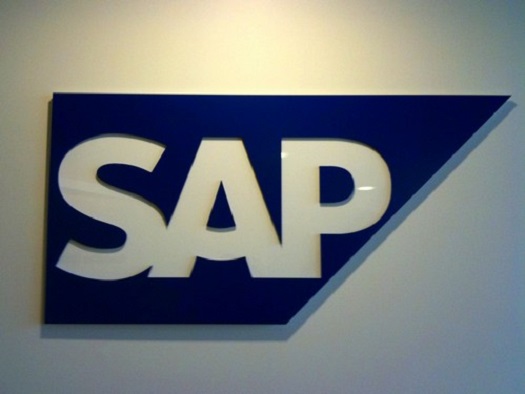- Five Forces Analysis ›
- Companies ›
- SAP Porter Five Forces Analysis
SAP Porter Five Forces Analysis
Five Forces analysis of SAP covering threat of new entrants & substitutes, bargaining power of buyers & suppliers and competitive rivalry.
Threat of New Entrants:
SAP is a German software giant having offices in more than 180 countries in the world. The company is providing business to more than 400,000 businesses across the globe. The primary product sold by SAP is an enterprise software, which assists in managing the operations of the businesses. The investment required to create a software and maintain it. Every company is attempting software upgradation to better optimize their operations and develop competitive proficiency and advantage. In this process, the customers rely only on brands with substantial market presence and a trustworthy brand name for their ERP software solutions. This is primarily because the software is extremely expensive and hence the switching cost of the customer becomes very high. In such a scenario, establishing credibility for a new company becomes challenging. Also, the capital required for research and development of a product competitive to SAP would be high, making the proposition less lucrative for any player. Hence, we may conclude that the threat of new entrant is a weak force to affect the competitive landscape for the company.

Image: flickr-photos/marc_smith/
This concludes the threat of new entrants in the SAP Porter Five Forces Analysis.
Threat of Substitutes:
Below are the threats of substitute products of Porter’s Five Forces analysis of SAP:
The ERP offered by SAP is a very well accomplished solution without any major substitutes available in the market. However, recent development in Artificial Intelligence and Machine Learning have challenged its position, by optimizing certain operations to a greater extent.
Investing in AI-ML based solutions is costlier than the brand and has not had a near-100% success rate, thus creating a sense of ambiguity in the minds of businesses. Also, the range of solutions offered by its solutions are not yet matched by any AI-ML solution yet. One cannot deny the potential of disruption that advanced algorithms can bring and transform the present working tools. Hence, we can rate the threat of substitutes as a moderate force in shaping the competitive strategies for SAP.
Read more about SAP
Bargaining Power of Customers:
In the SAP Porter Five Forces Analysis the bargaining power of the customers can be explained as:
The customers of SAP are more than 420,000 businesses, which means that the customer-base is extremely diversified and individual businesses don’t hold much significance in the top and bottom line of SAP. Also, the product is standardized for the companies to adopt. The price range is fixed based on the requirements of the companies, and hence the buyers have little negotiation power in the payouts. Switching cost is very high, and businesses usually stick to the ERP solution once bought for an extended period. The information asymmetry is huge and companies can almost never create their personal enterprise management system for a more reasonable price.
Hence, we may conclude that the bargaining power of customers is a weak force to impact the competitive environment of the software giant.
Bargaining Power of Suppliers:
Following is the bargaining power of suppliers in the Porter’s Five Forces analysis of SAP:
The suppliers of SAP software are the employees who work for the labs to develop and upgrade the solutions offered by the company. These individual employees usually have less negotiation power with the upper management of the company. They are well paid and taken care of by the company, but individual employees are not as important to company’s overall workforce, which consists of some of the best minds of the world. Therefore, we can rate the bargaining power of suppliers to be a weak force to affect the competitive environment of SAP.
Competitive Rivalry:
The impact of key competitors in the SAP Porter Five Forces Analysis is as follows:
The ERP software space is effectively a duopoly between SAP and Oracle, which have a very similar product offering. Newer and smaller players are present in the market but have little influence on the customer base of these two giants. The pricing between these two players is also very competitive. Implementing ERP solutions for a business is very expensive, and thus it usually sticks to the ERP solution first sought, which would usually be by a company which has high level of credibility and brand name in the market. The switching cost is extremely high which means no user would defect to any other service provider. However, it would also mean that it would be challenging for SAP to attract users of other company’s ERP user. This helps us conclude that the competitive rivalry is a moderate force to influence the competitive strategies for SAP.
The picture would be very different for any other ERP service provider.
To conclude, the above SAP Porter Five Forces Analysis highlights the various elements which impact its competitive environment. This understanding helps to evaluate the various external business factors for any company.
This article has been researched & authored by the Content & Research Team which comprises of MBA students, management professionals, and industry experts. It has been reviewed & published by the MBA Skool Team. The content on MBA Skool has been created for educational & academic purpose only.
Browse analysis of more brands and companies similar to SAP Porter Five Forces Analysis. This section covers many brands and companies.
Continue Reading:
The names and other brand information used in the Five Forces Analysis section are properties of their respective companies. The companies are not associated with MBA Skool in any way.
What is MBA Skool?About Us
MBA Skool is a Knowledge Resource for Management Students, Aspirants & Professionals.
Business Courses
Quizzes & Skills
Quizzes test your expertise in business and Skill tests evaluate your management traits
Related Content
All Business Sections
Write for Us